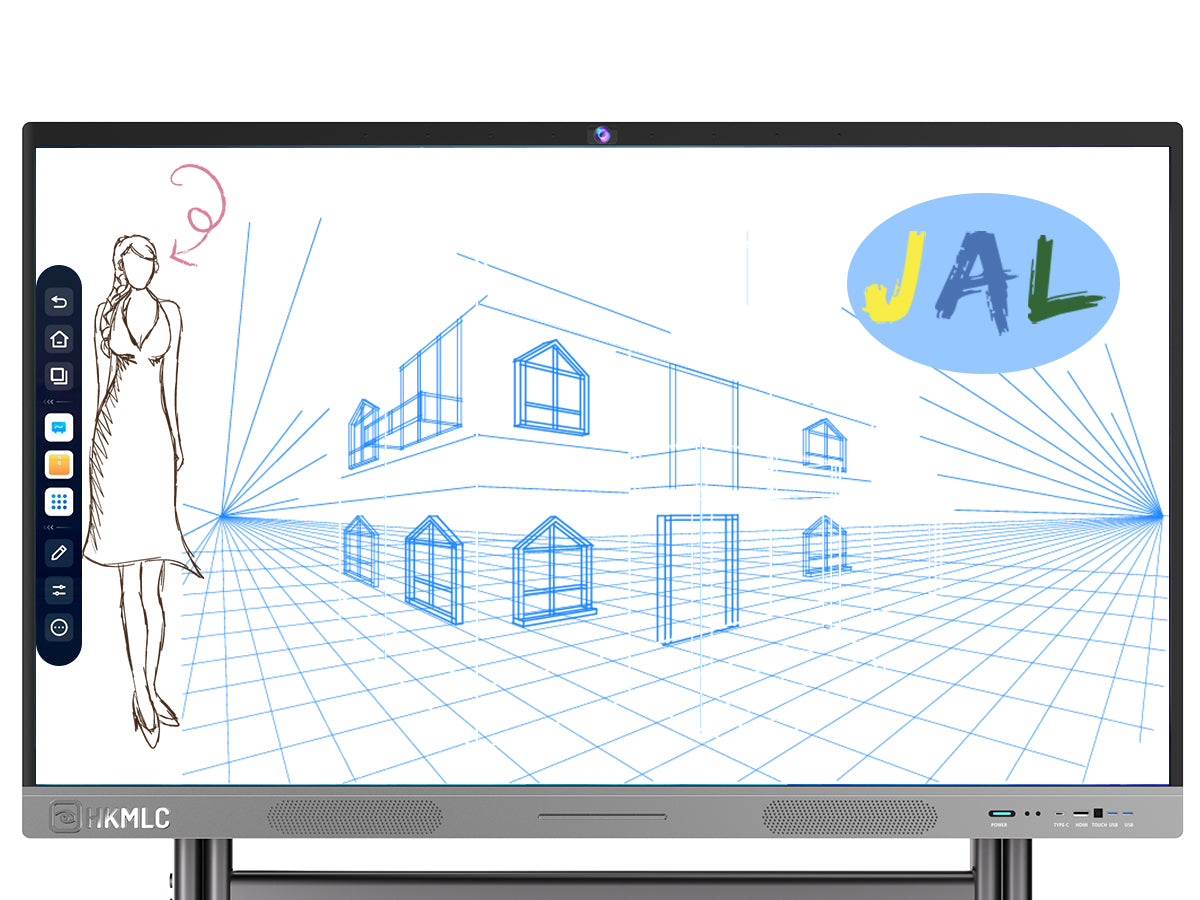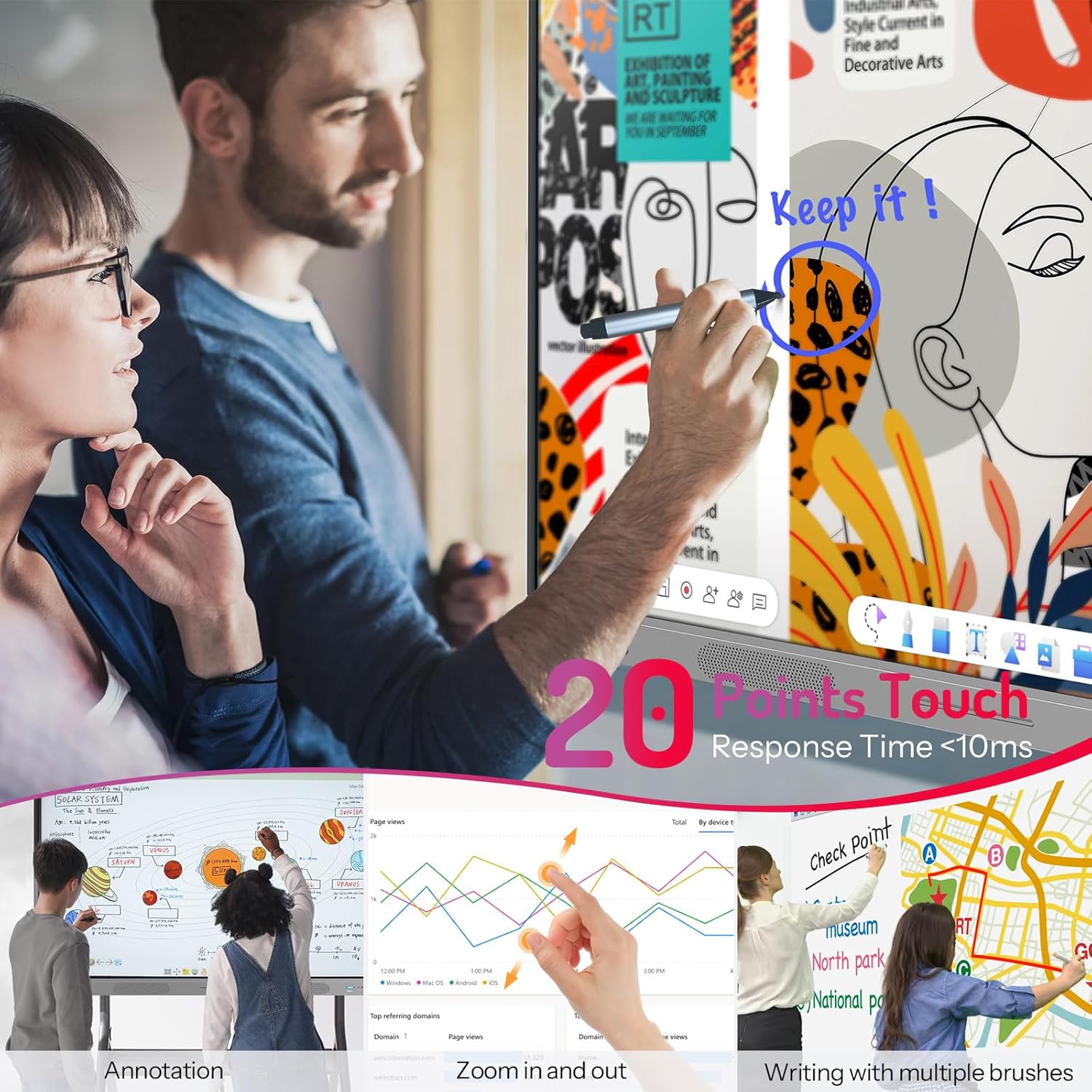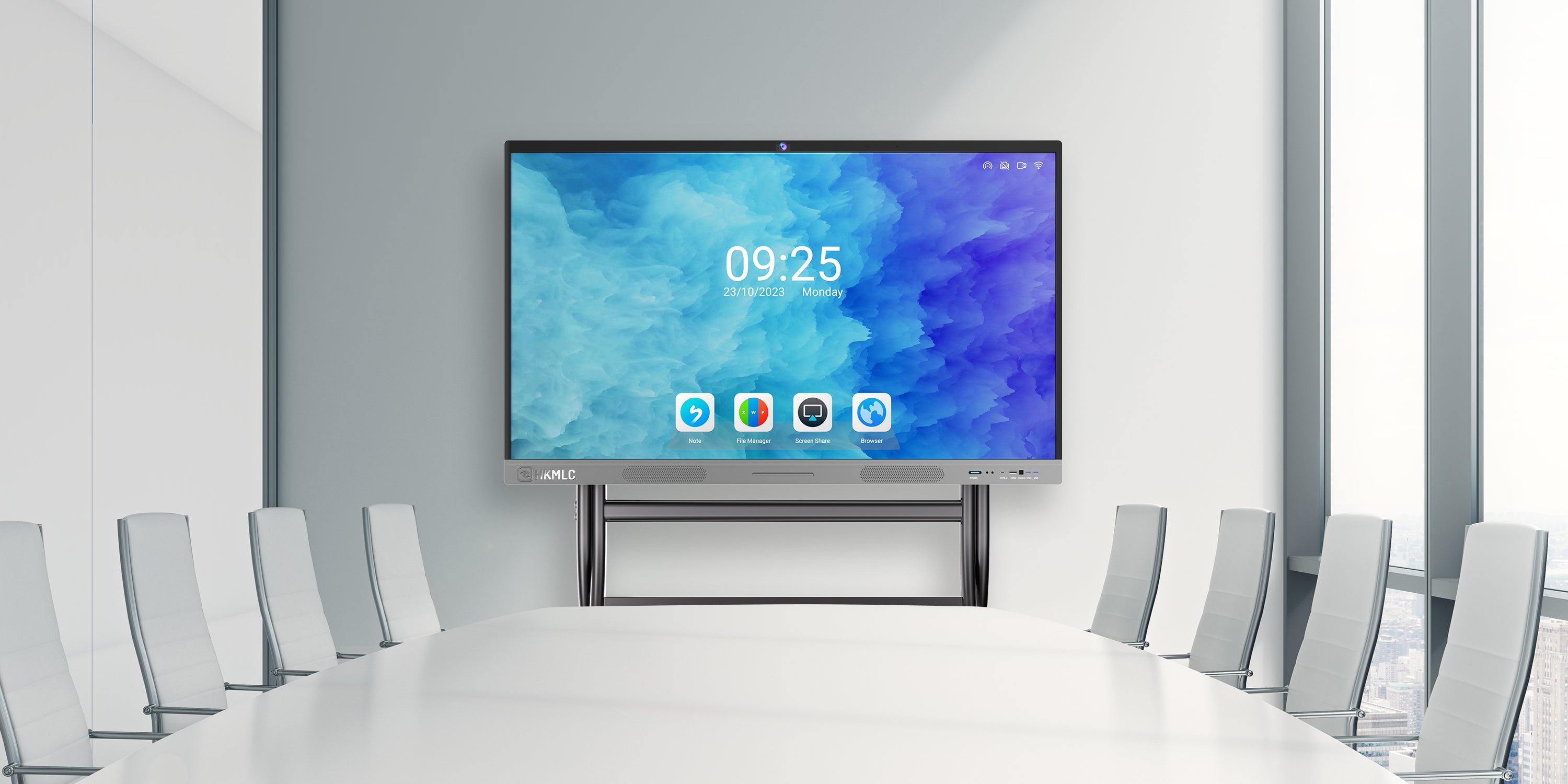

Smart boards integrate seamlessly with video conferencing tools such as Zoom, Skype, and Microsoft Teams, allowing design and engineering teams spread across different locations to collaborate in real time. Team members can work on the same project simultaneously, make annotations, and adjust designs on the fly, significantly speeding up the design process and reducing time-to-market.

These interactive displays enable designers and engineers to manipulate complex 3D models and technical drawings with ease. By using their hands or a stylus, professionals can zoom in, rotate, and modify designs directly on the screen, providing a tactile interaction that computer screens and paper prints cannot match. This hands-on interaction helps in identifying design flaws and making precise adjustments.

Presenting designs to clients and stakeholders is smoother with smart boards. Designers can showcase their work dynamically, make real-time edits based on feedback, and even let clients interact with the models or drawings themselves. This level of involvement not only enhances client satisfaction but also helps in finalizing designs more quickly with fewer revisions.

Choose between a 55” or 75” screen to best fit your space. Transform any area into a collaborative hub with HKMLC’s moveable floor stand.

Meet, brainstorm, and present—all with the all-in-one HKMLC Smart Board.
Get Yours NowBy incorporating these advanced tools into their workflow, design and engineering firms can not only improve productivity and efficiency but also drive innovation and creativity.